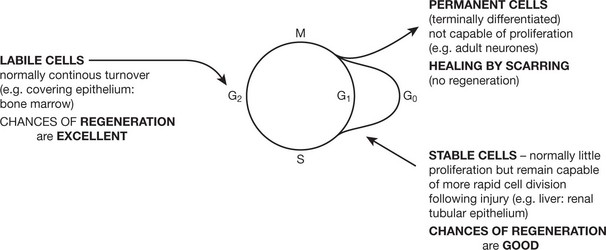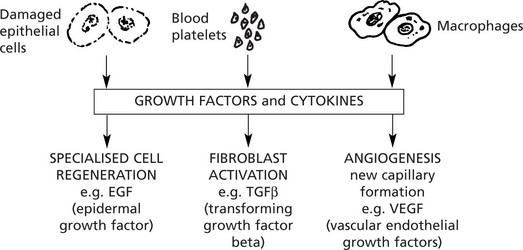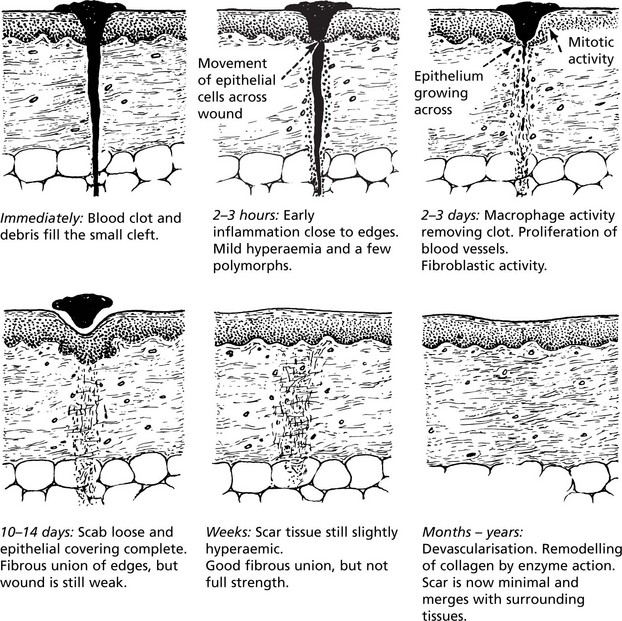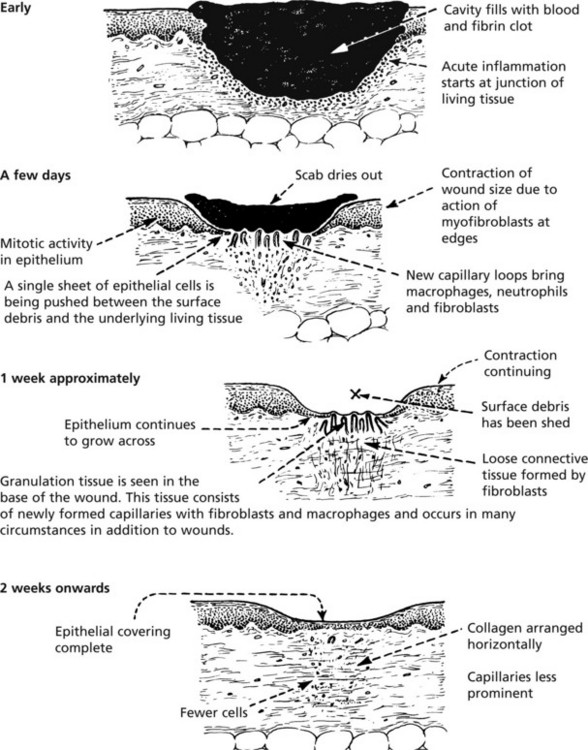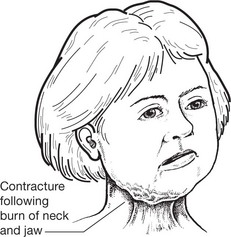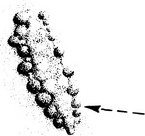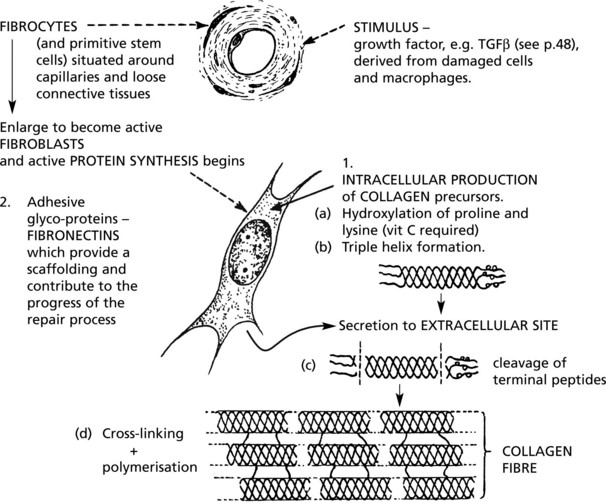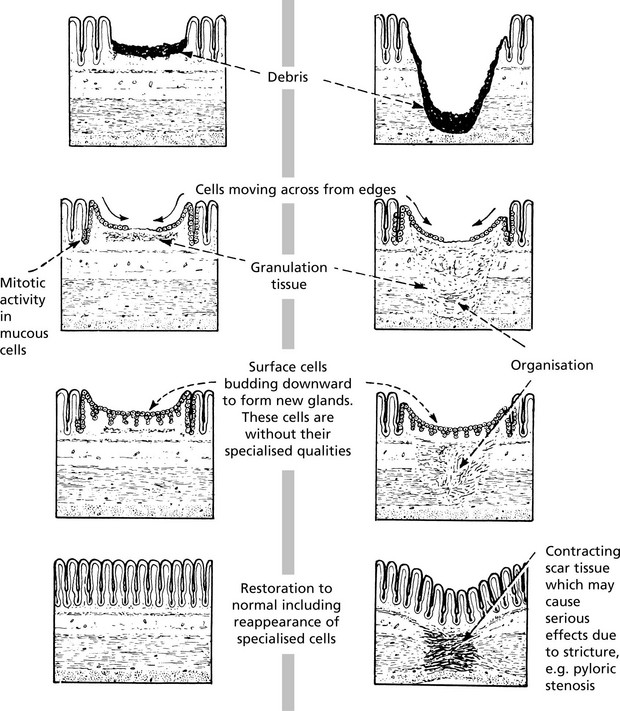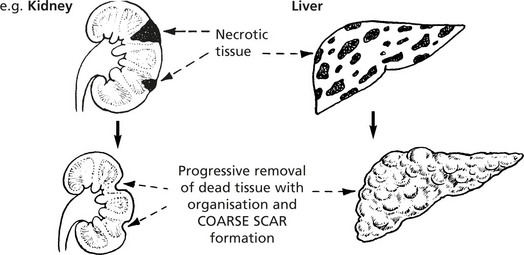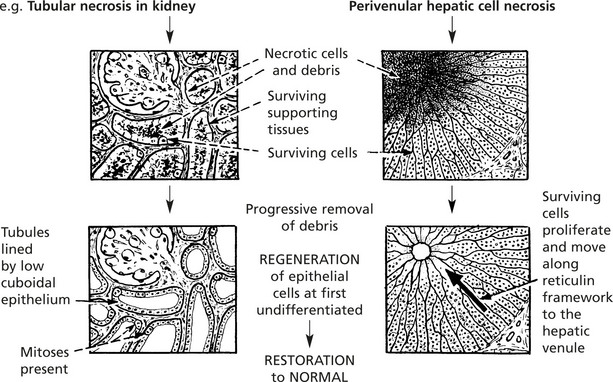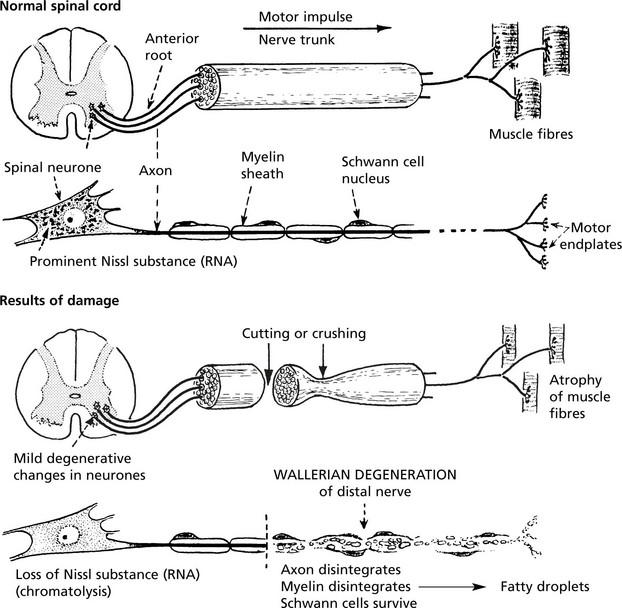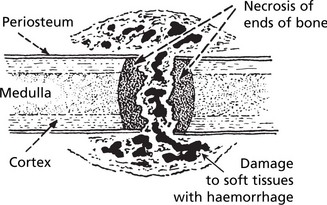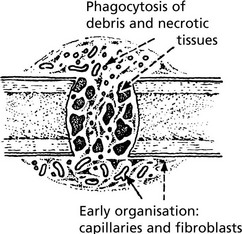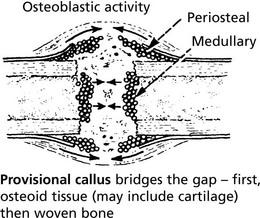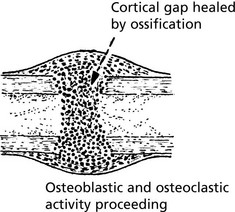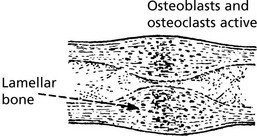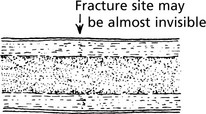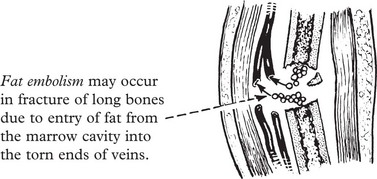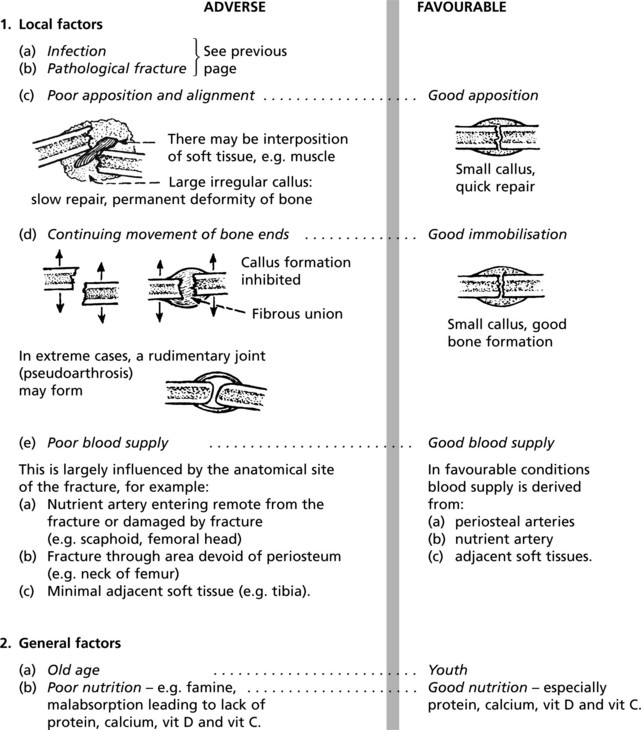Chapter 3 Healing
Healing
Healing is the final stage of the response of tissue to injury.
The capacity of a tissue for regeneration depends on its proliferative ability and on the type and severity of the damage. In particular, regeneration is not possible if the STEM CELLS are destroyed.
Three broad groups of cells are considered in the context of the cell cycle (p.3).
REGENERATION involves TWO PROCESSES:
The FACTORS which CONTROL healing and repair are complex: they include the production of a large variety of growth factors.
Wound Healing
Healing of a wound shows both epithelial regeneration (healing of the epidermis) and repair by scarring (healing of the dermis).
Two patterns are described depending on the amount of tissue damage. These are the same process varying only in amount.
This occurs in clean, incised wounds with good apposition of the edges – particularly planned surgical incisions.
This occurs in open wounds, particularly when there has been significant loss of tissue, necrosis or infection.
Healing – Fibrosis
FIBROSIS is the end result of wound healing, chronic inflammation and organisation.
Healing – Special Situations
Internal Surfaces
The epithelial lining of the gastrointestinal tract regenerates in a similar way to the skin.
Muscle
Muscle fibres of all 3 types – skeletal, cardiac and smooth – have only limited capacity to regenerate.
When a mass of muscle tissue is damaged, repair by scarring occurs. This is particularly important in the heart after infarction.
If the damage affects individual muscle fibres diffusely and with varying severity, then regeneration of the specialised fibres is possible (e.g. the myocardium may recover completely from the effects of diphtheria toxin and virus infection).
Nervous Tissue
Central Nervous System
Regeneration does not occur when a neurone is lost.
In cases of acute damage, the initial functional loss often exceeds the loss of actual nerve tissue because of the reactive changes in the surrounding tissue. As these changes diminish, some function may be restored.
Scarring within the CNS is by proliferation of astrocytes and the production of fibrillary glial acidic protein – a process known as gliosis.
Peripheral Nerves
When a peripheral nerve is damaged, the axon and its myelin sheath rapidly degenerate distally. The supporting tissues of the nerve (Schwann cells) degenerate slowly.
Regeneration can occur because the central neurone of which the axon is a peripheral extension is remote from the site of damage.

